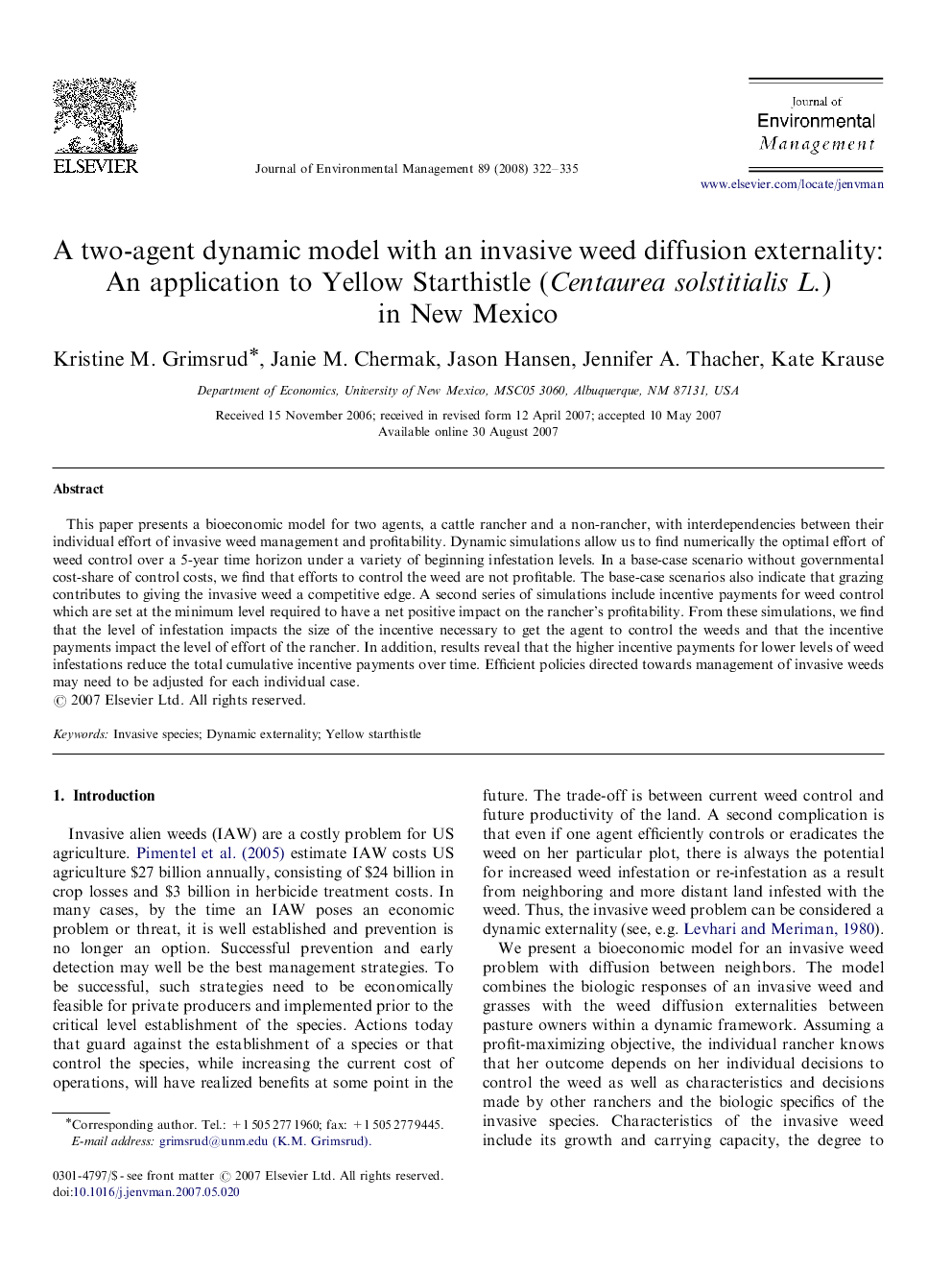| Article ID | Journal | Published Year | Pages | File Type |
|---|---|---|---|---|
| 1058201 | Journal of Environmental Management | 2008 | 14 Pages |
This paper presents a bioeconomic model for two agents, a cattle rancher and a non-rancher, with interdependencies between their individual effort of invasive weed management and profitability. Dynamic simulations allow us to find numerically the optimal effort of weed control over a 5-year time horizon under a variety of beginning infestation levels. In a base-case scenario without governmental cost-share of control costs, we find that efforts to control the weed are not profitable. The base-case scenarios also indicate that grazing contributes to giving the invasive weed a competitive edge. A second series of simulations include incentive payments for weed control which are set at the minimum level required to have a net positive impact on the rancher's profitability. From these simulations, we find that the level of infestation impacts the size of the incentive necessary to get the agent to control the weeds and that the incentive payments impact the level of effort of the rancher. In addition, results reveal that the higher incentive payments for lower levels of weed infestations reduce the total cumulative incentive payments over time. Efficient policies directed towards management of invasive weeds may need to be adjusted for each individual case.
